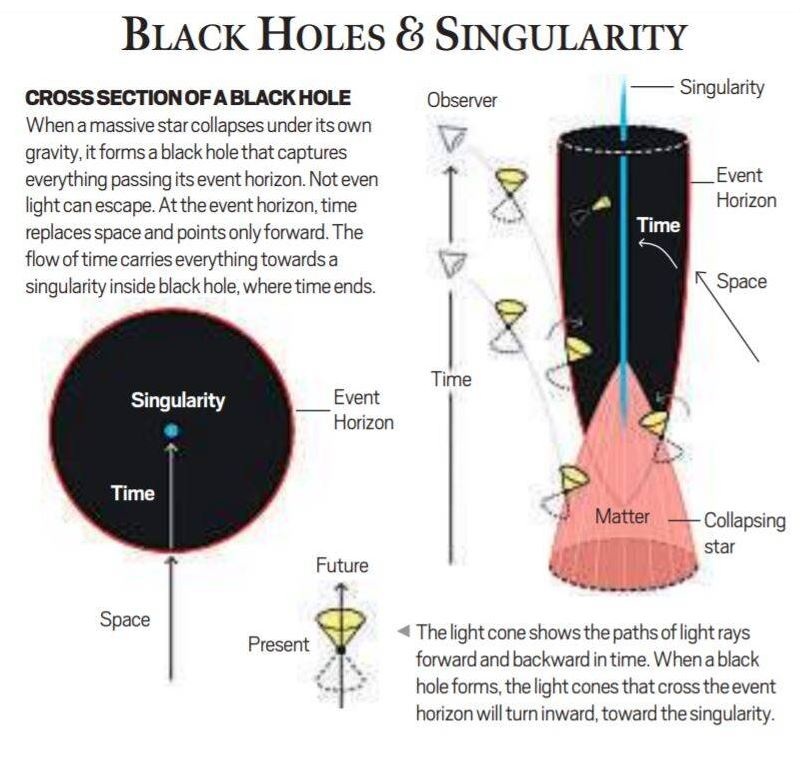Nobel Prize for Physics 2020 | 07 Oct 2020
Why in News
The Nobel Prize in Physics for the year 2020 was awarded to three astrophysicists Roger Penrose from the UK, Reinhard Genzel from Germany, and Andrea Ghez from the USA.
Key Points
- Roger Penrose received half of this year’s prize for the discovery that a black hole formation is a robust prediction of the general theory of relativity.
- Black holes were one of the first and most extreme predictions of Einstein’s General Theory of Relativity which came in 1915.
- The theory explains gravity, as objects try to follow a straight line through a universe whose geometry is warped by matter and energy. As a result, planets, as well as light beams, follow curving paths.
- Dr Penrose proved that if too much mass accumulated in too small a place, collapse into a black hole was inevitable. At the boundary of a black hole, called the event horizon, one would have to go faster than the speed of light to escape it, which is impossible. At the centre of a black hole, where the density became infinite, the laws of physics, would no longer apply.
- Genzel and Ghez received the second half of the prize for the discovery of a supermassive black hole at the centre of the Milkyway galaxy, now known to be the Sagittarius A*.
- It has a mass four million times that of the Sun and is confined to an area roughly the size of our Solar System.
- In 2019, scientists got the first optical image of a black hole which is at the centre of the Messier 87 galaxy.
- Sagittarius A* is the second black hole whose photographs have been captured by the Event Horizon Telescope project. It is yet to be released.
- Dr. Ghez is only the fourth woman to win the Nobel Prize in Physics, following Marie Curie in 1903, Maria Goeppert Mayer in 1963 and Donna Strickland in 2018.
- Other News: Americans Harvey J Alter and Charles M Rice, and British scientist Michael Houghton were awarded the Nobel Prize for Medicine or Physiology, 2020 for the discovery of the Hepatitis C Virus.

